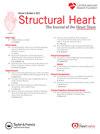The Effect of 30% or More Volume Reduction Achieved by Surgical Ventricular Reconstruction for Ischemic Cardiomyopathy: A Systematic Review
IF 1.4
Q3 CARDIAC & CARDIOVASCULAR SYSTEMS
引用次数: 0
Abstract
Background
Ischemic cardiomyopathy, commonly attributable to coronary artery disease, leads to ventricular remodeling. Surgical ventricular reconstruction (SVR) aims to reverse this by restoring cardiac morphology. This review evaluates SVR's influence on ventricular volume reduction, comparing <30% to >30% reduction effects on left ventricular ejection fraction (LVEF) and patient outcomes.
Methods
A systematic search following Preferred Reporting Items for Systematic Reviews and Meta-Analysis guidelines was performed in PubMed, Embase, Web of Science, and the Cochrane Collaboration. Data extracted included left ventricular end systolic volume, LVEF, New York Heart Association classification, mitral regurgitation grade, and mortality rates.
Results
Of the 37 articles included, 29 reported a mean volume reduction of >30%, while 8 reported a reduction <30%. A total of 4975 participants were included across all studies. Mean volume reduction was 43% in group 1 (>30%) and 28% in group 2 (<30%). The mean relative increase in LVEF for group 1 was 38%, which was larger compared to group 2 with 30%. Additionally, mean reduction in New York Heart Association class was 1.5 in group 1 and 1.2 in group 2. There was no difference in mitral regurgitation grade reduction between the 2 groups. Postoperative mortality within 30 days was 5.8% in group 1 vs. 5.2% in group 2.
Conclusions
Both volume reduction groups showed improved LVEF and outcomes post-SVR, indicating the efficacy of SVR. The majority of studies achieved a volume reduction exceeding 30%, surpassing the 19% reported in the Surgical Treatment for Ischemic Heart Failure trial. Further meta-analysis can determine optimal volume reduction for enhanced cardiac function and outcomes.
缺血性心肌病手术心室重建后容量减少30%或以上的效果:一项系统综述
缺血性心肌病,通常可归因于冠状动脉疾病,可导致心室重构。外科心室重建(SVR)旨在通过恢复心脏形态来扭转这种情况。本综述评估了SVR对心室容积减少的影响,比较了30%和30% SVR对左心室射血分数(LVEF)和患者预后的影响。方法在PubMed、Embase、Web of Science和Cochrane Collaboration中按照系统评价和元分析指南的首选报告项目进行系统搜索。提取的数据包括左室收缩末期容积、LVEF、纽约心脏协会分类、二尖瓣返流等级和死亡率。结果在纳入的37篇文章中,29篇报道平均体积减少了30%,8篇报道减少了30%。所有研究共纳入4975名参与者。1组平均体积减少43% (>30%), 2组平均体积减少28% (<30%)。第1组LVEF平均相对增加38%,高于第2组的30%。此外,第一组纽约心脏协会分级平均降低1.5,第二组平均降低1.2。两组间二尖瓣返流等级降低无差异。术后30天死亡率1组为5.8%,2组为5.2%。结论两个减容组的LVEF和SVR后的预后均有改善,表明SVR有效。大多数研究实现了超过30%的体积缩小,超过了缺血性心力衰竭手术治疗试验报告的19%。进一步的荟萃分析可以确定增强心功能和结果的最佳容积减少。
本文章由计算机程序翻译,如有差异,请以英文原文为准。
求助全文
约1分钟内获得全文
求助全文
来源期刊

Structural Heart
Medicine-Cardiology and Cardiovascular Medicine
CiteScore
1.60
自引率
0.00%
发文量
81
 求助内容:
求助内容: 应助结果提醒方式:
应助结果提醒方式:


